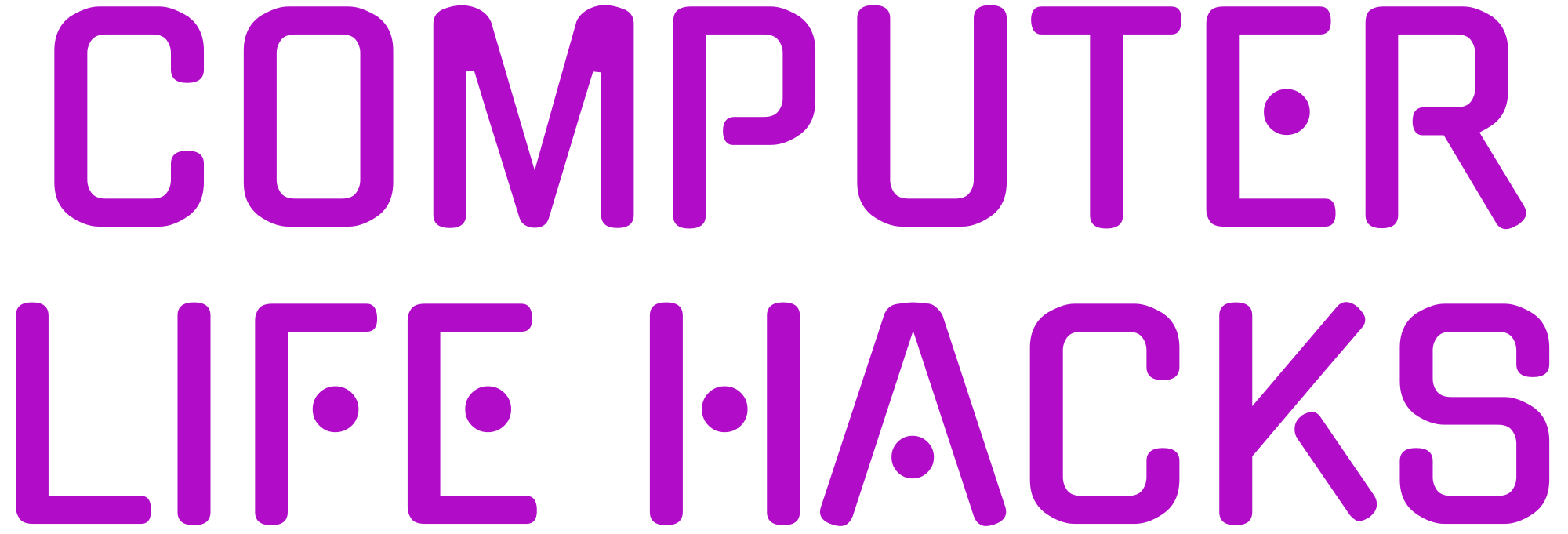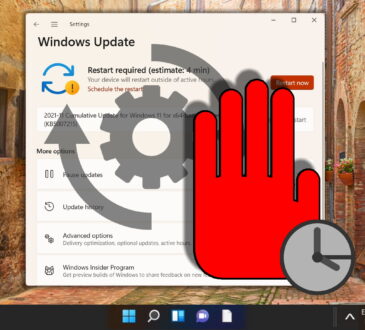
If you’ve ever finished a long day at your computer and felt your eyes burning, watering, or just downright exhausted — you’re not alone. Eye strain is one of the most common issues for anyone working or gaming at a screen for hours at a time.
Luckily, there are some brilliant desktop tools and simple tricks that can help. Whether you’re editing documents, coding, designing, or gaming, these tools can go a long way toward making your screen time a lot more comfortable.
Let’s take a look at the best solutions available in 2025 to protect your vision — without disrupting your workflow.
Why Does Eye Strain Happen?
Before diving into the tools, it helps to know what’s actually going on. Staring at screens for too long without breaks leads to:
- Blue light exposure, which messes with your circadian rhythm
- Low blink rate, which dries out your eyes
- Improper screen brightness relative to your environment
- Over-focusing on static objects, like text or UI
Now let’s fix that.
1. f.lux – The Classic (Still Excellent)
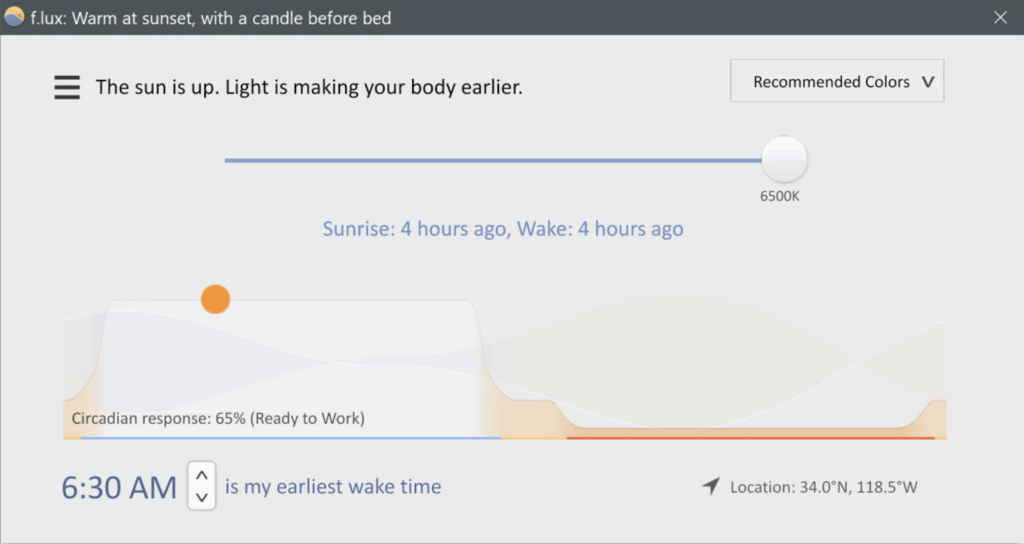
- Platform: Windows, macOS, Linux
What it does: f.lux adjusts your screen’s color temperature to match the time of day. In the evening, it warms up the colors, reducing blue light and easing eye strain.
Why it’s still great: f.lux now offers deeper customization, including per-app rules and circadian rhythm graphs. It’s light on resources and just works in the background.
“After sunset, the screen slowly shifts to a warm amber—your eyes will thank you.”
2. Windows 11 Night Light / macOS Night Shift
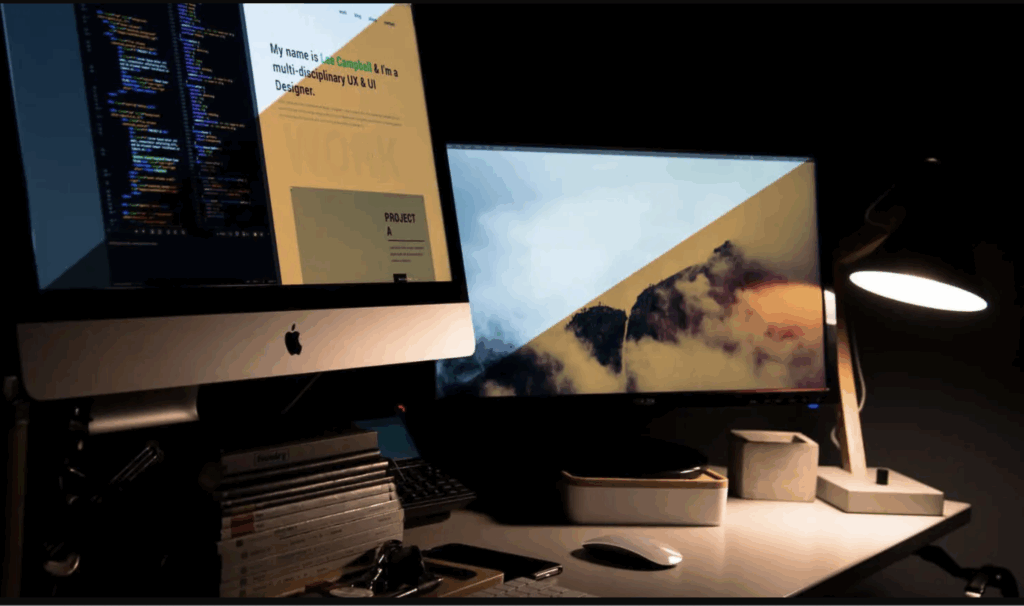
Built-in solutions from Microsoft and Apple allow you to enable blue light filters without installing anything extra.
How to activate:
- On Windows 11: Go to Settings → System → Display → Night Light
- On macOS: Open System Settings → Displays → Night Shift
They’re not as flexible as f.lux, but they’re a solid, no-fuss option.
3. Iris – Advanced Eye Protection Tool

- Platform: Windows, macOS, Linux
What it does: Iris goes beyond color temperature. It offers brightness adjustments without PWM (which causes flicker), scheduling options, fonts with higher readability, and even blink reminders.
Best for: Anyone who works 8+ hours a day in front of a screen and wants full control.
4. CareUEyes – Productivity Meets Eye Care
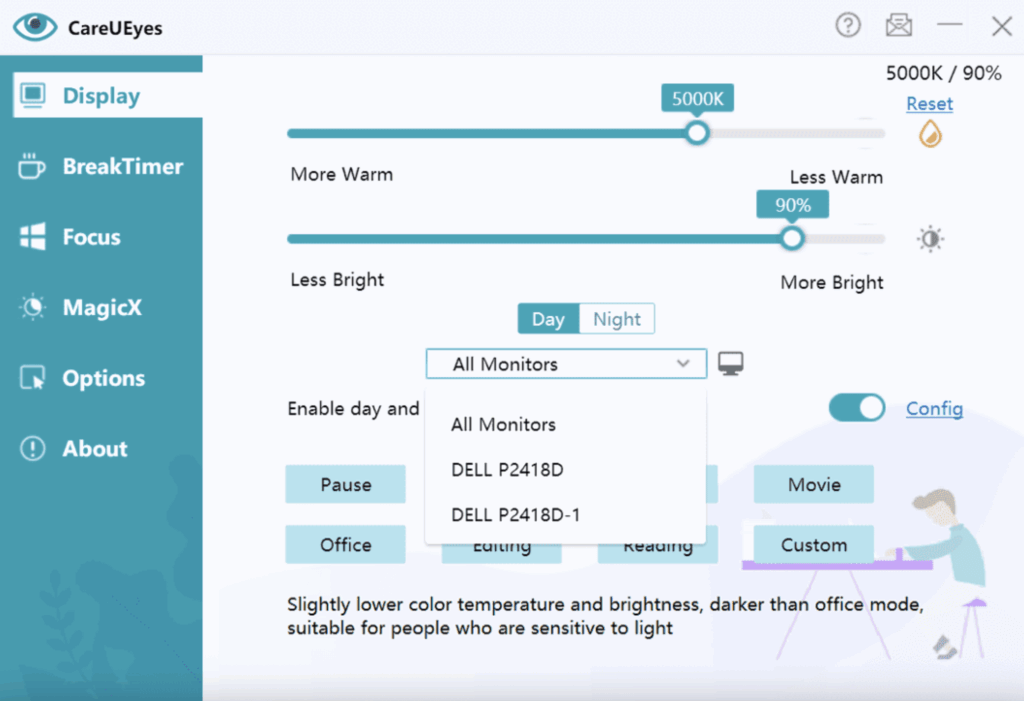
- Platform: Windows
What it does: Combines a blue light filter with scheduled break reminders and focus sessions (like a Pomodoro timer). You can choose from different presets depending on the time of day or your activity.
Bonus: The mini dashboard shows when your next break is due.
5. Redshift (for Linux users)
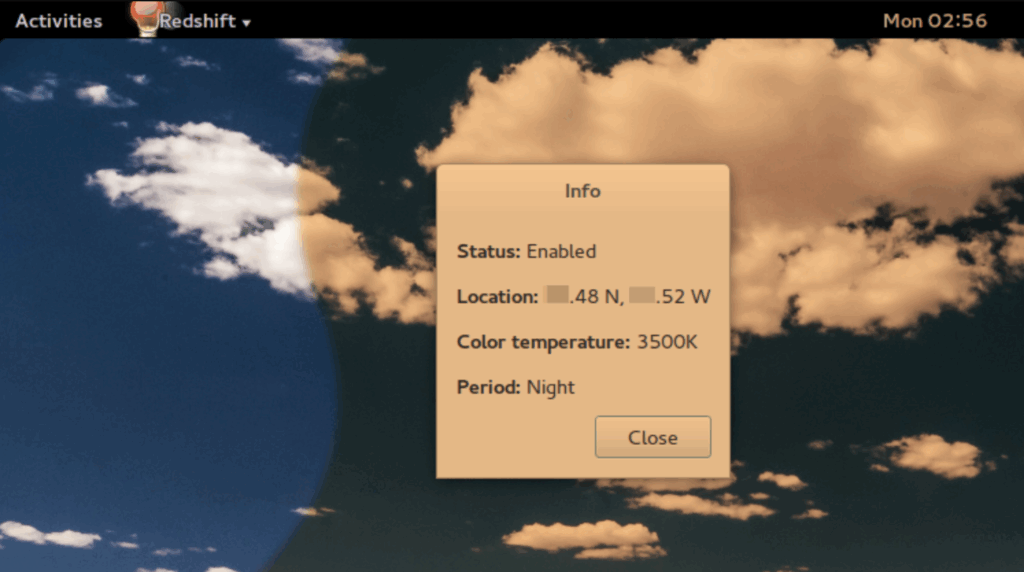
- Platform: Linux
What it does: Similar to f.lux, Redshift automatically adjusts color temperature based on your location and time. It’s open-source and works well with light window managers and older machines.
Pro tip: Pair Redshift with tools like SafeEyes to get break reminders too.
Bonus Tips to Reduce Eye Strain (No Software Needed)
- Use the 20-20-20 rule: Every 20 minutes, look at something 20 feet away for 20 seconds.
- Adjust your ambient lighting: Avoid harsh overhead light or glare directly behind the screen.
- Blink more often: It sounds silly, but we forget to blink when we’re focused.
- Use dark mode and high-contrast themes when appropriate.
Final Thought
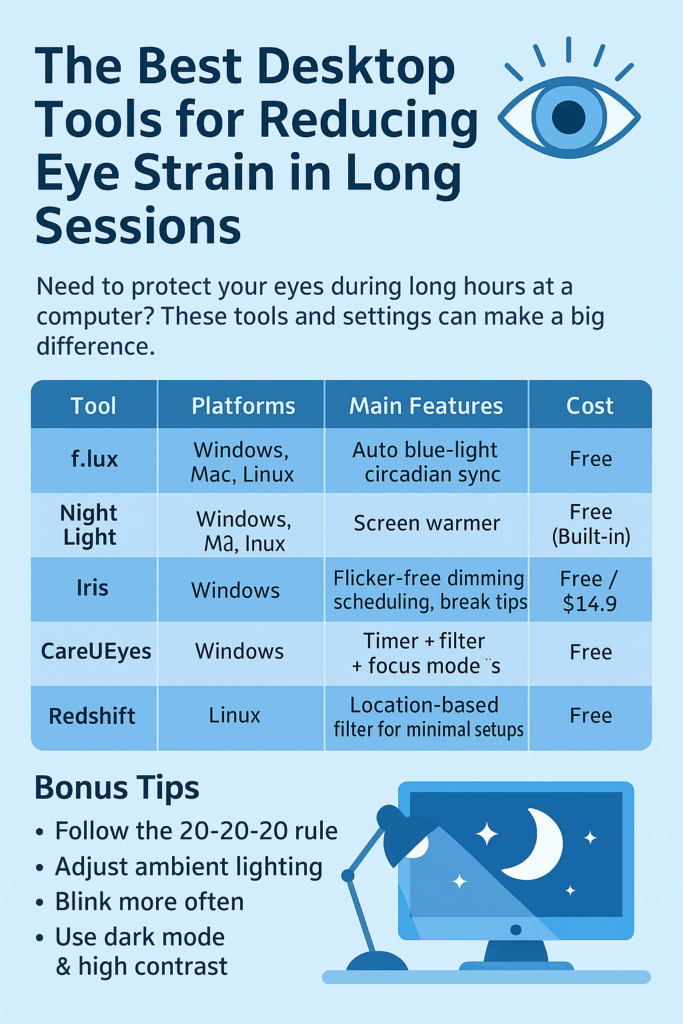
In a world where screens dominate our work and play, protecting your eyes isn’t just nice—it’s necessary. These tools are easy to install, mostly free, and can dramatically improve your long-term comfort and focus.
Your future self — clear-eyed and headache-free — will definitely thank you.
